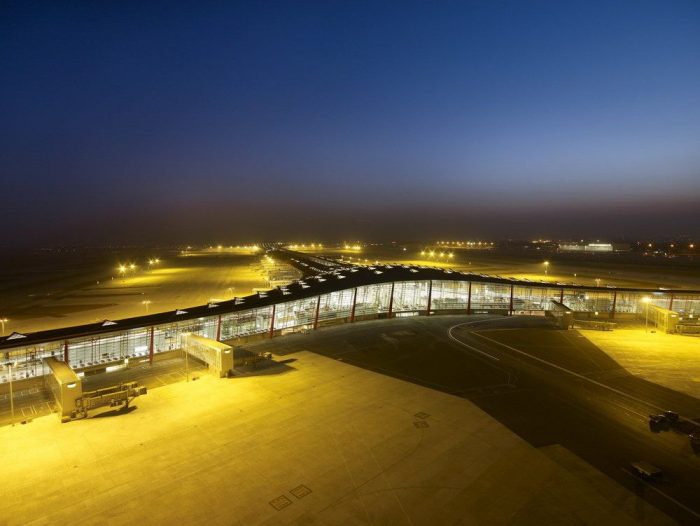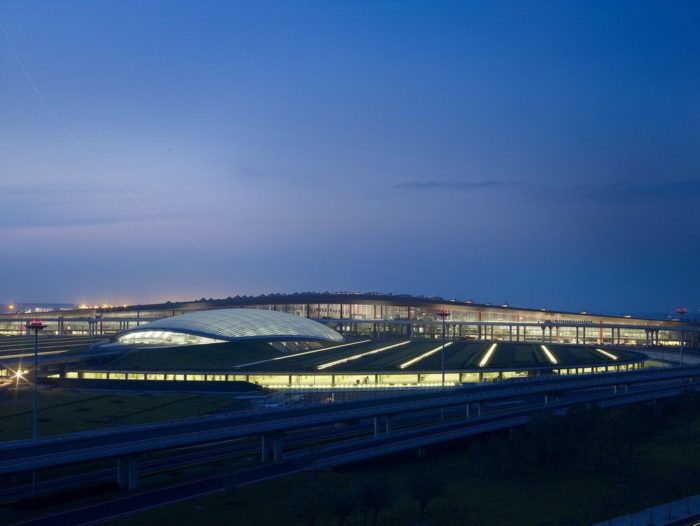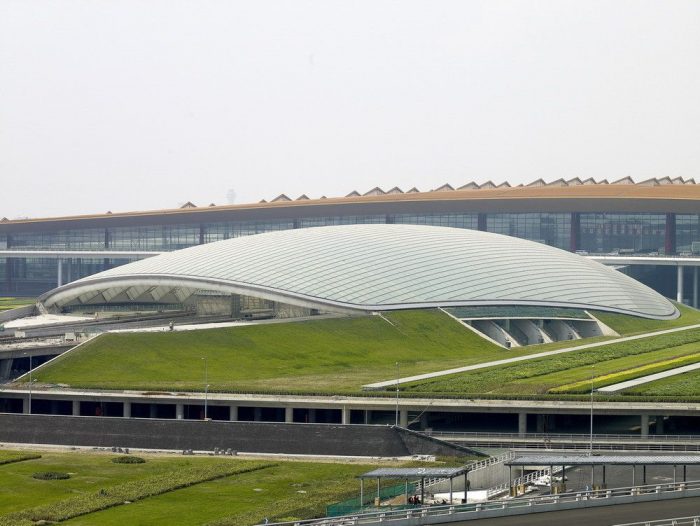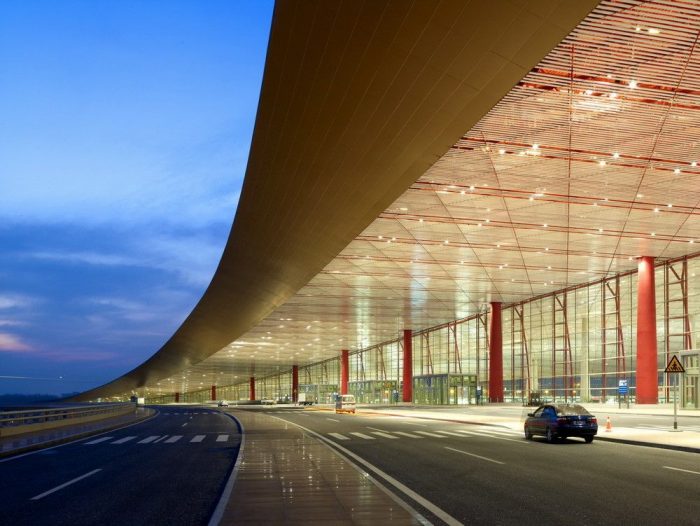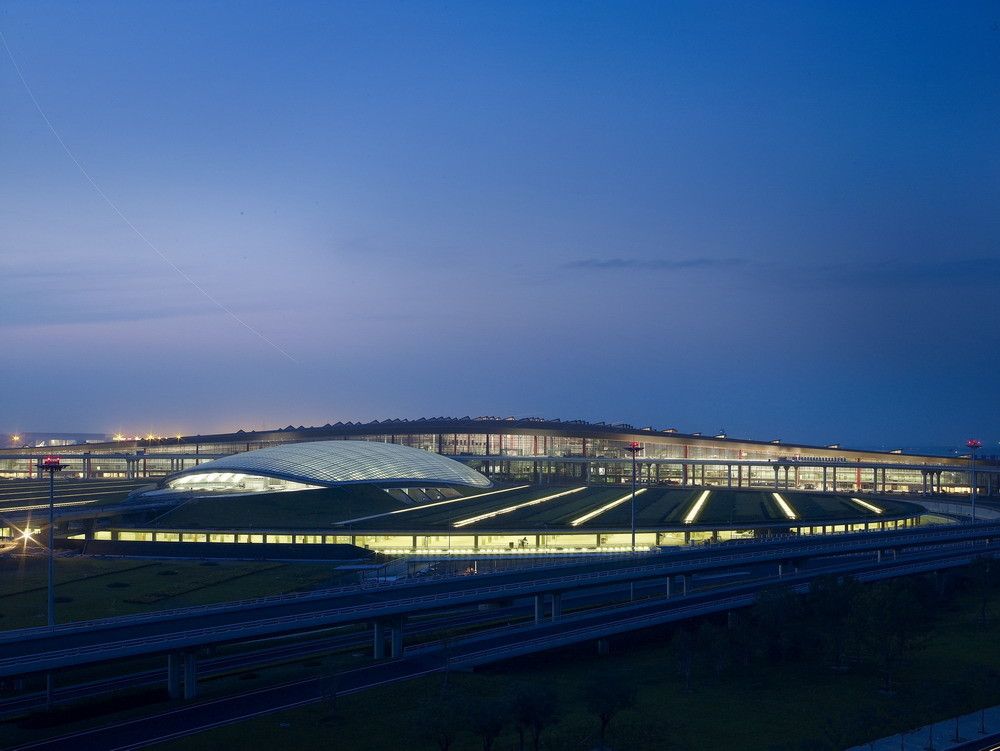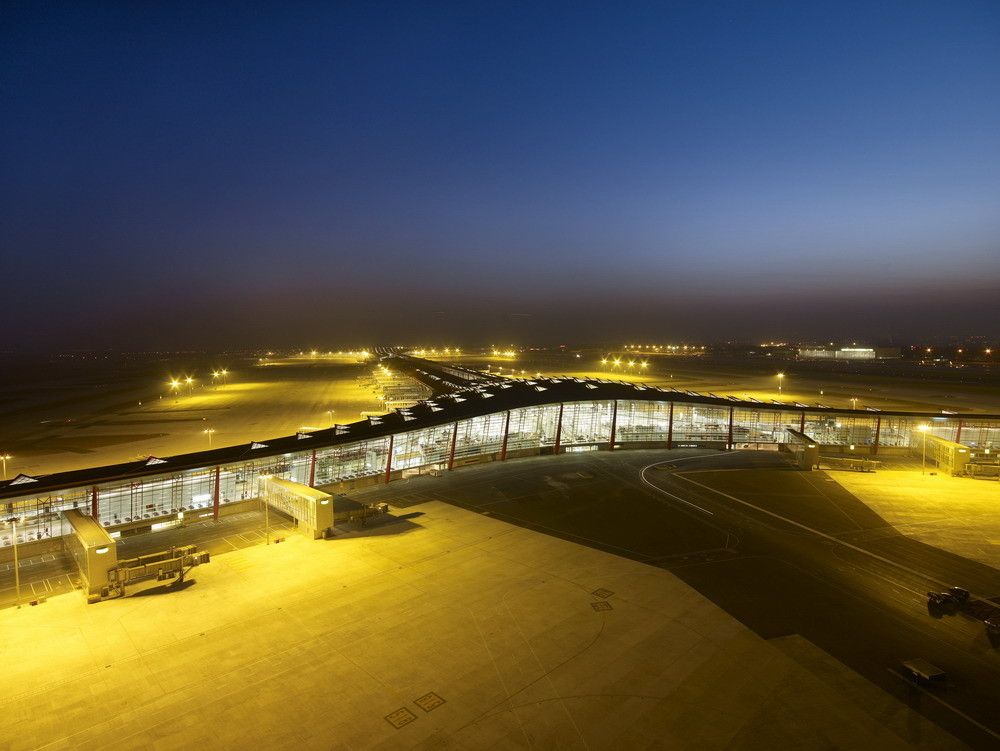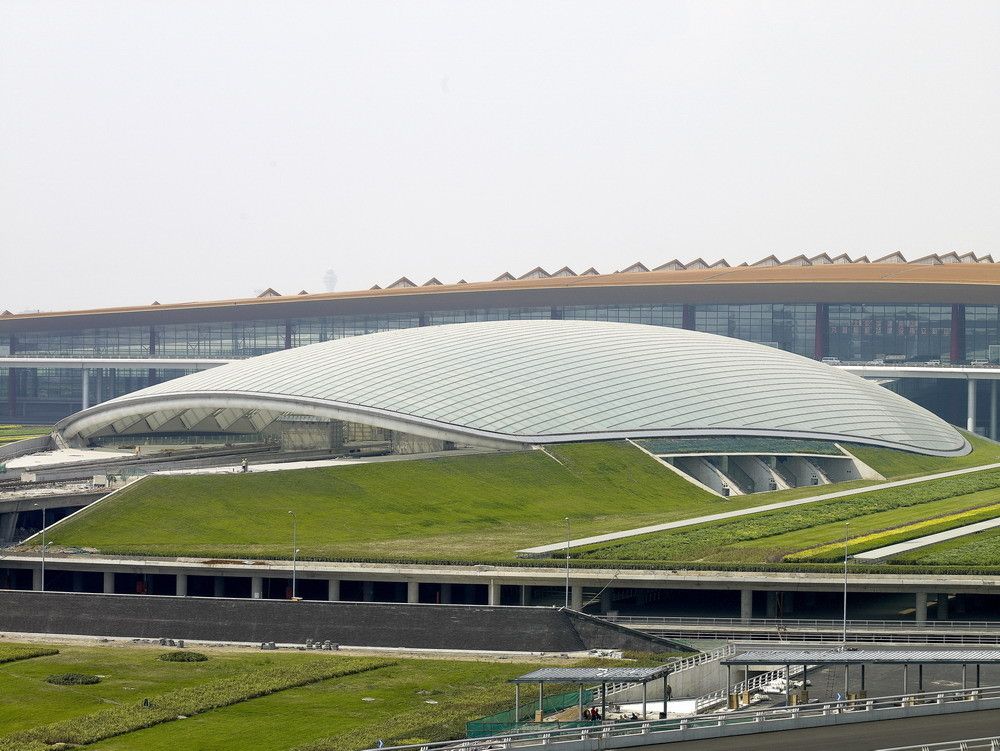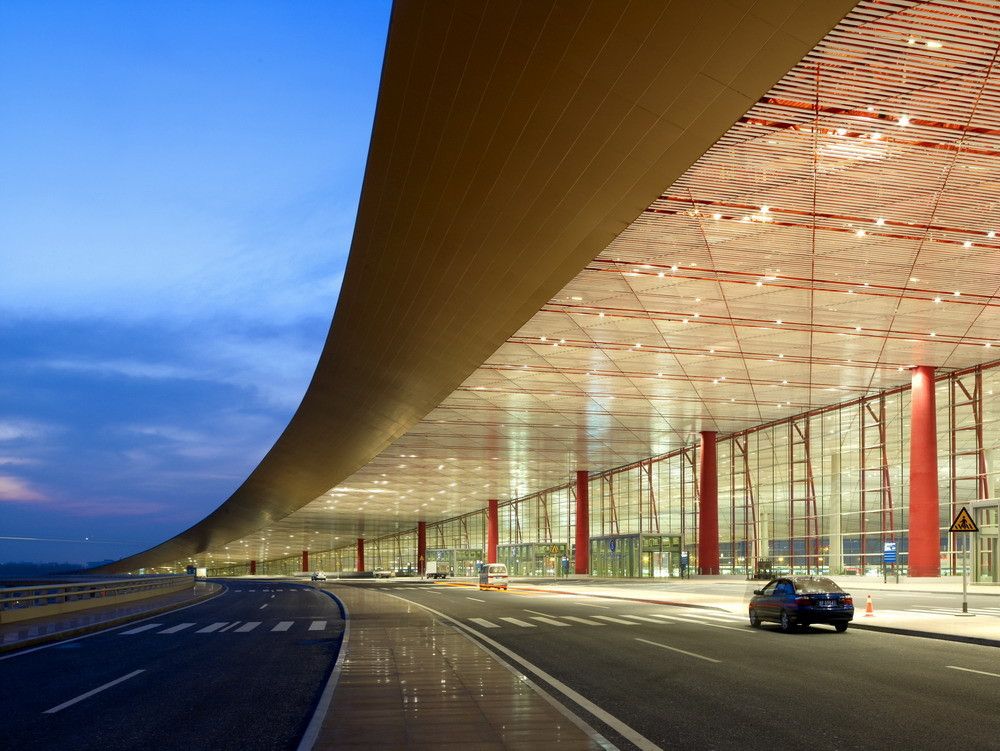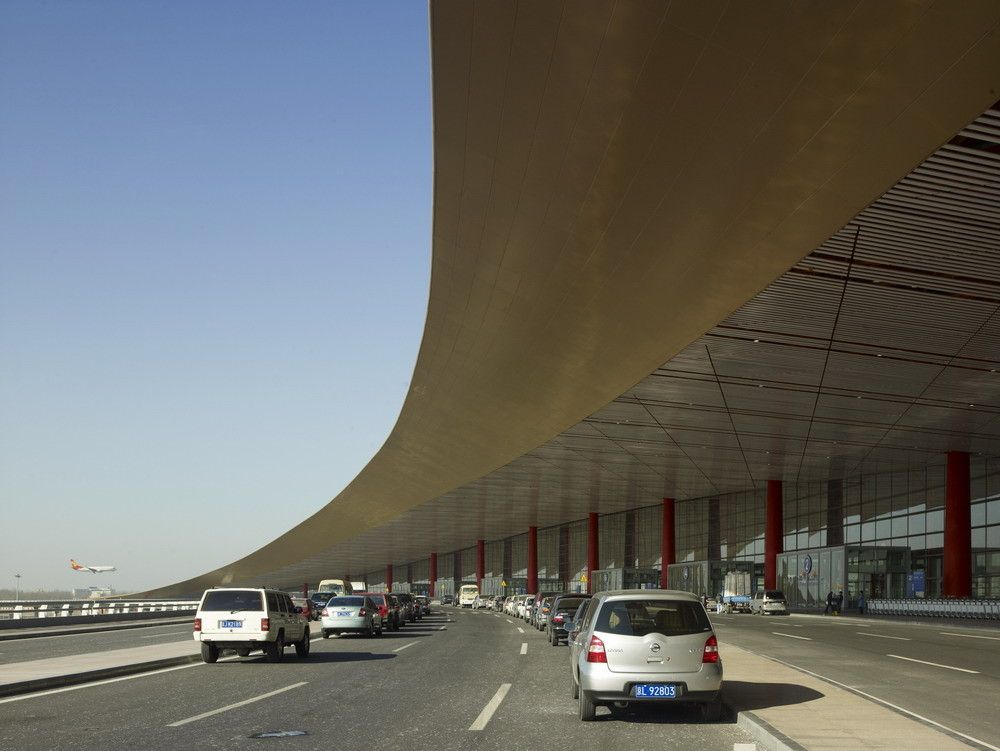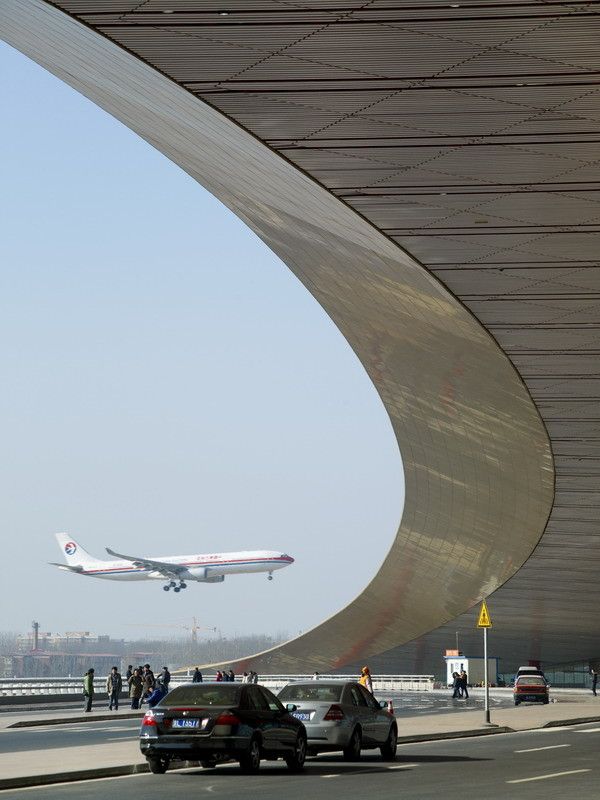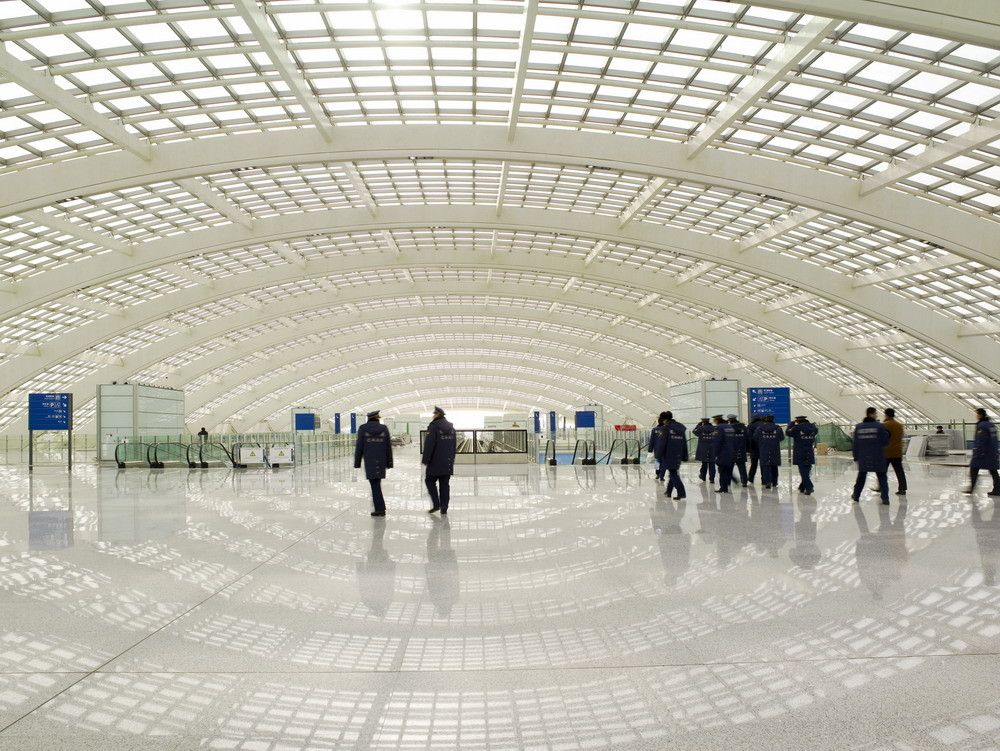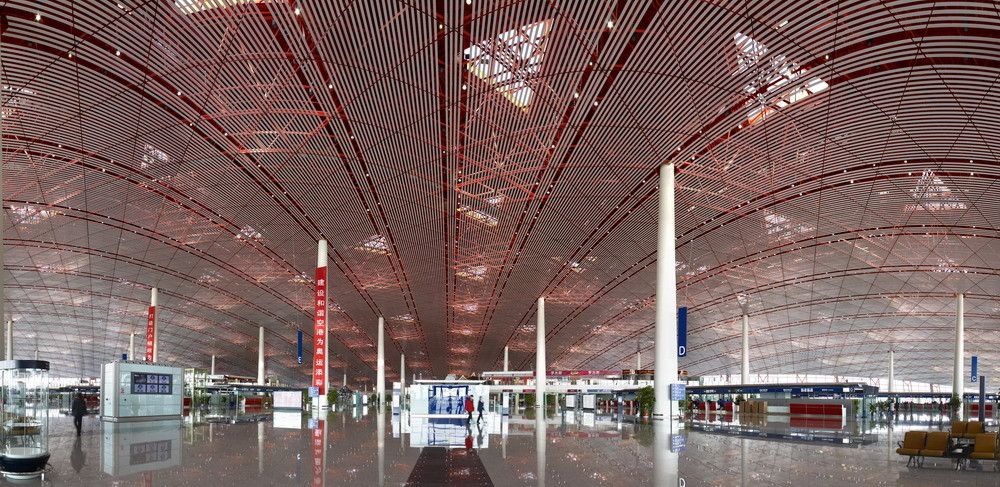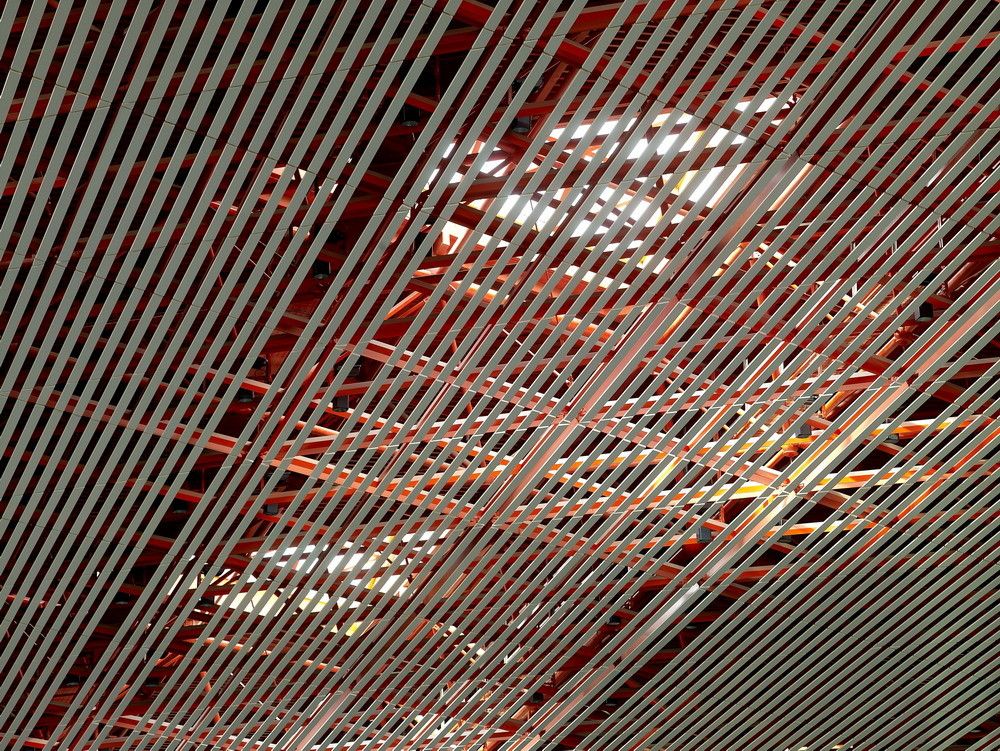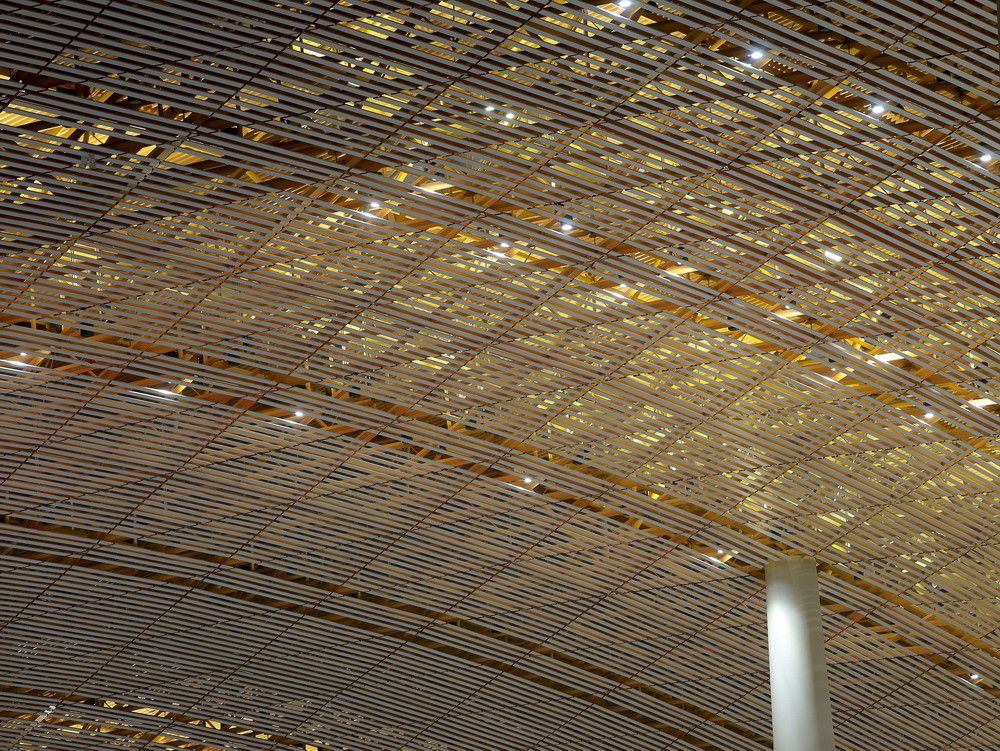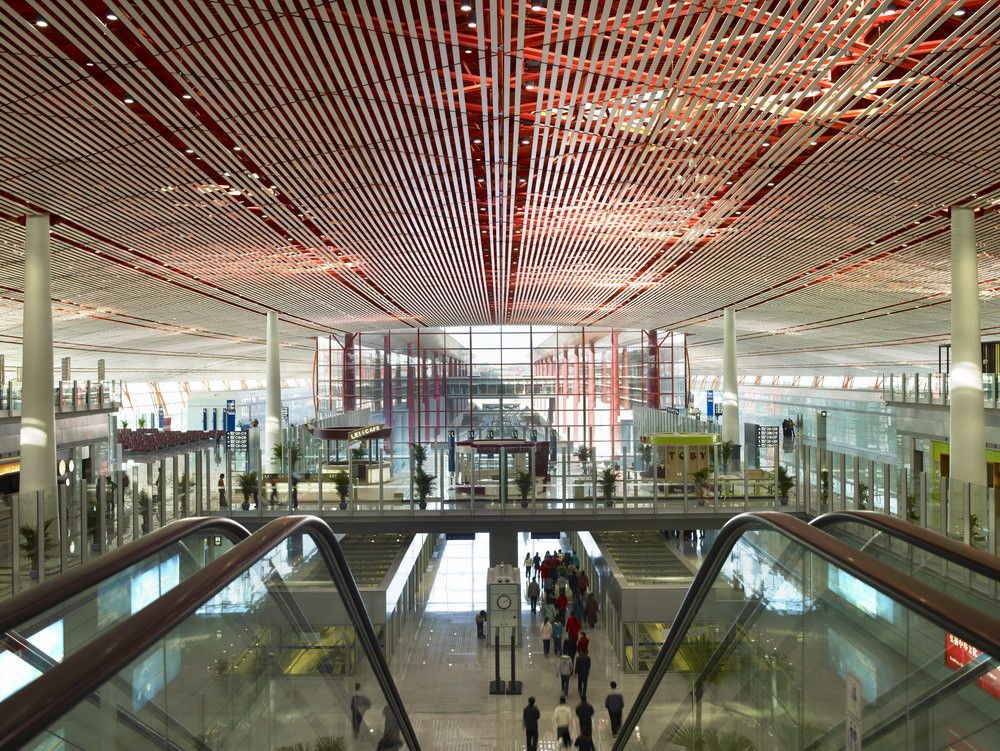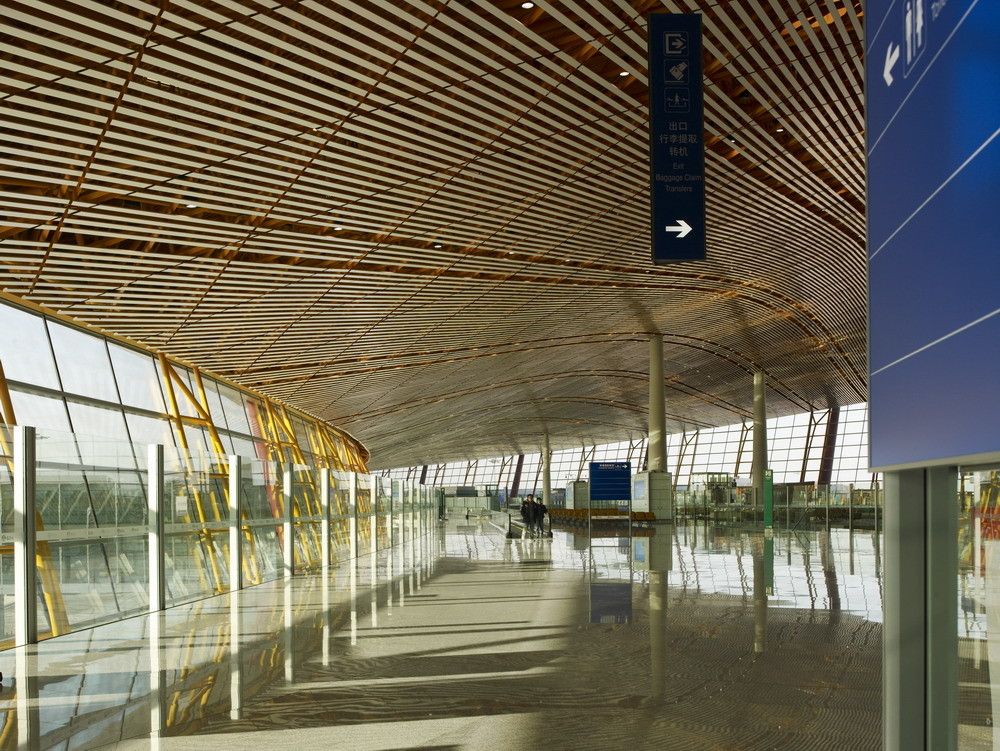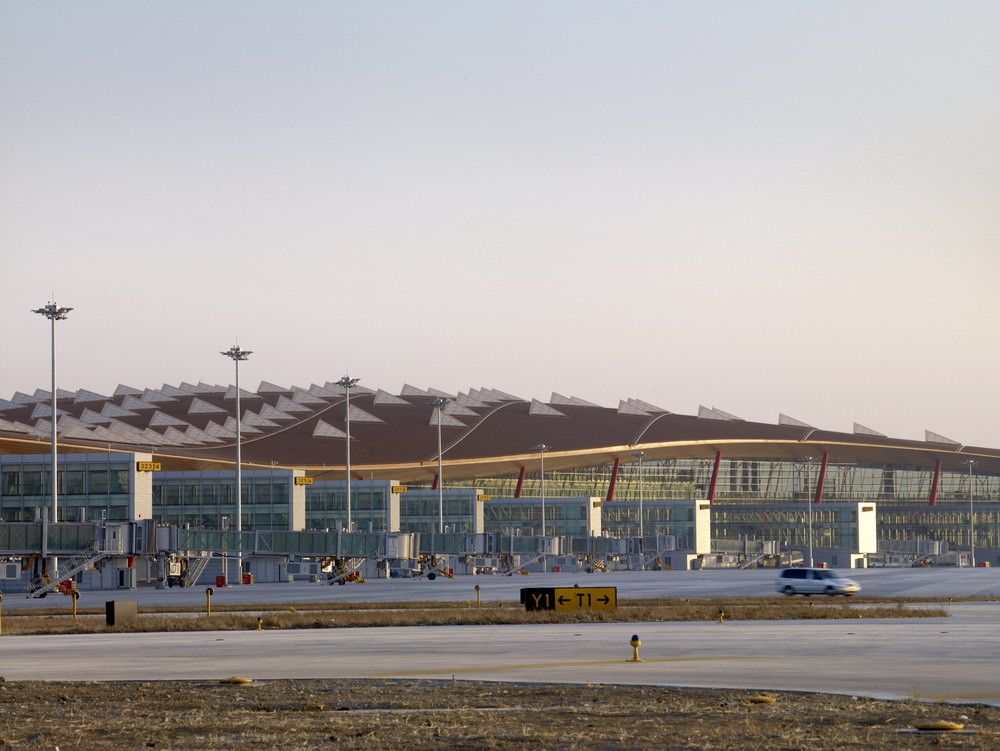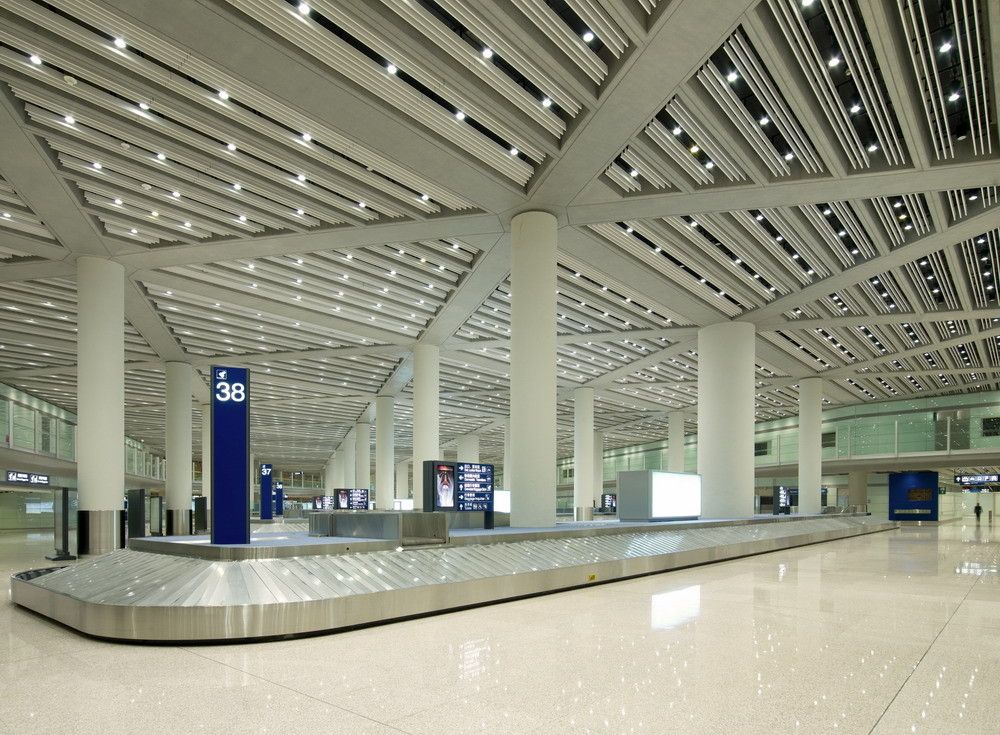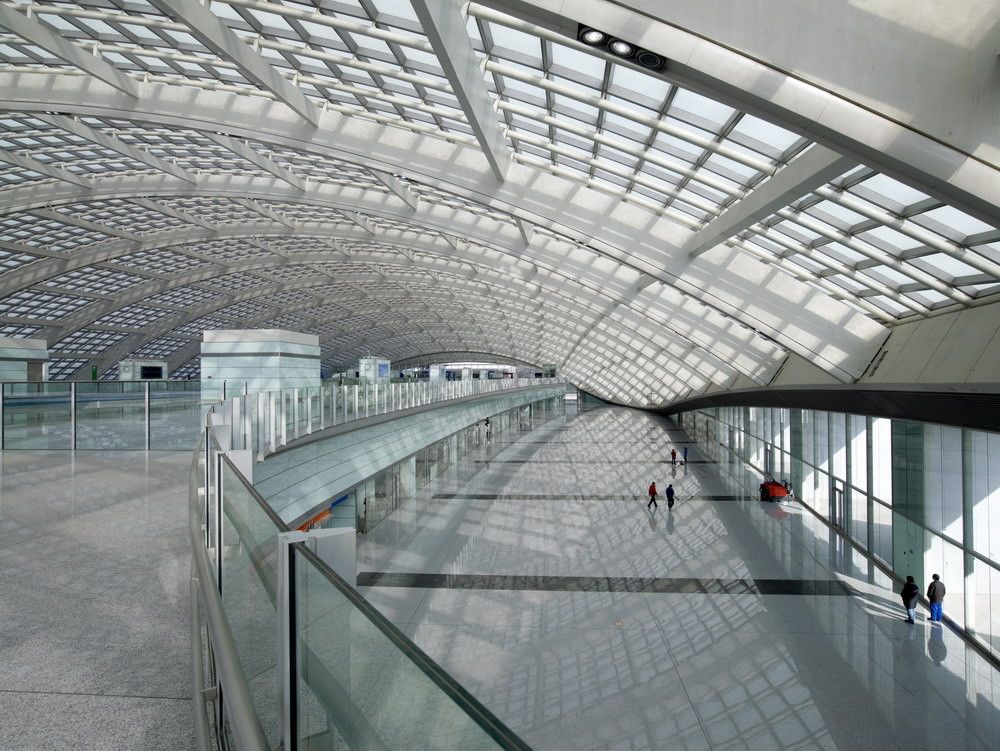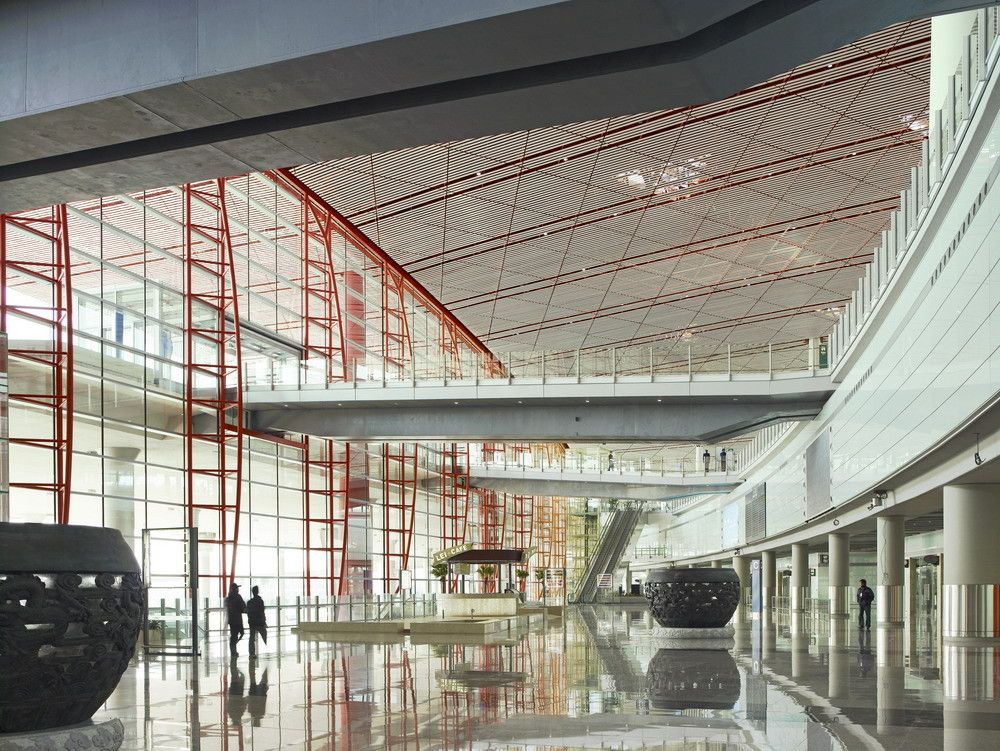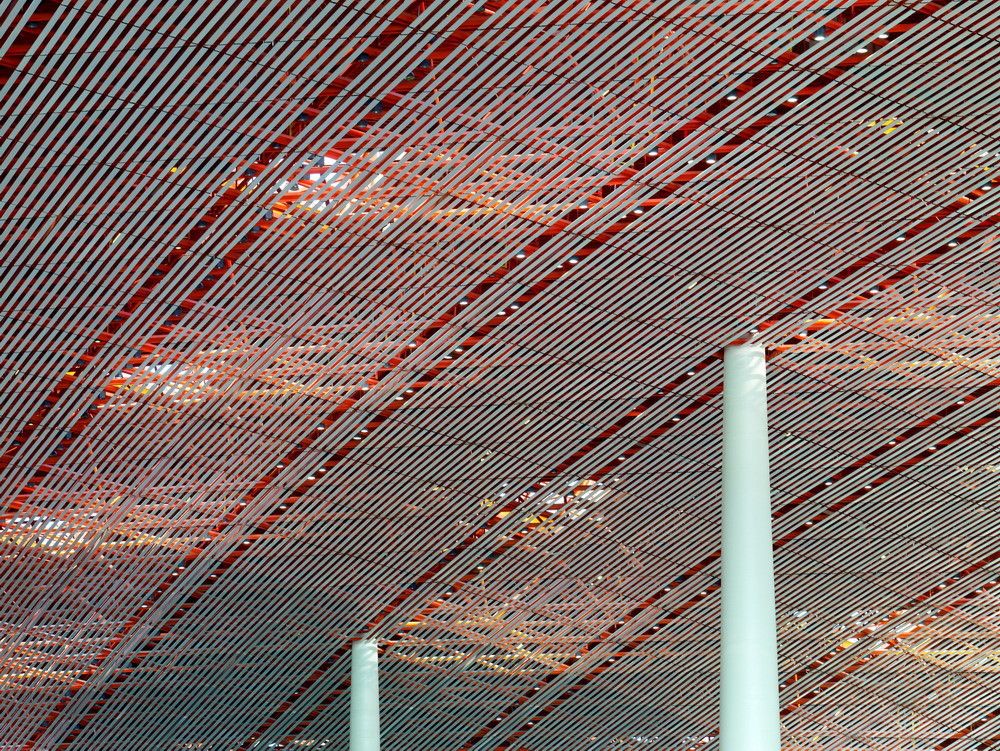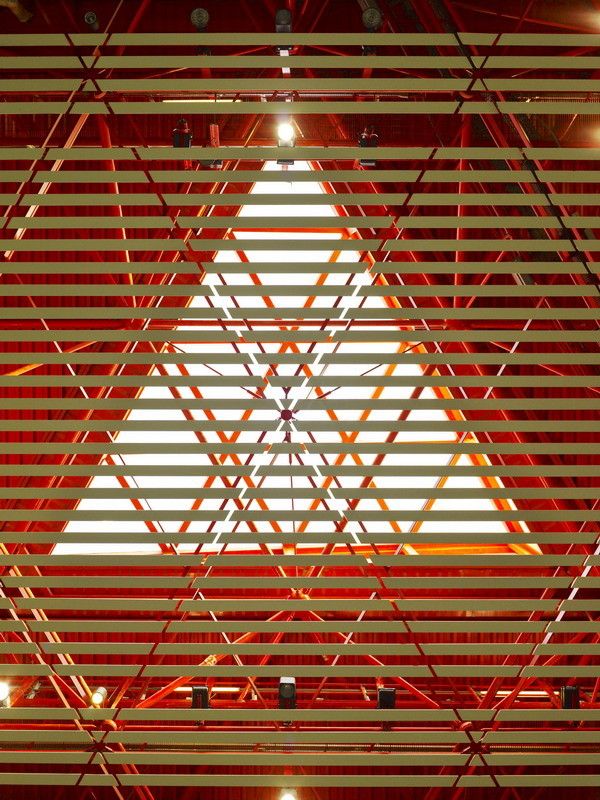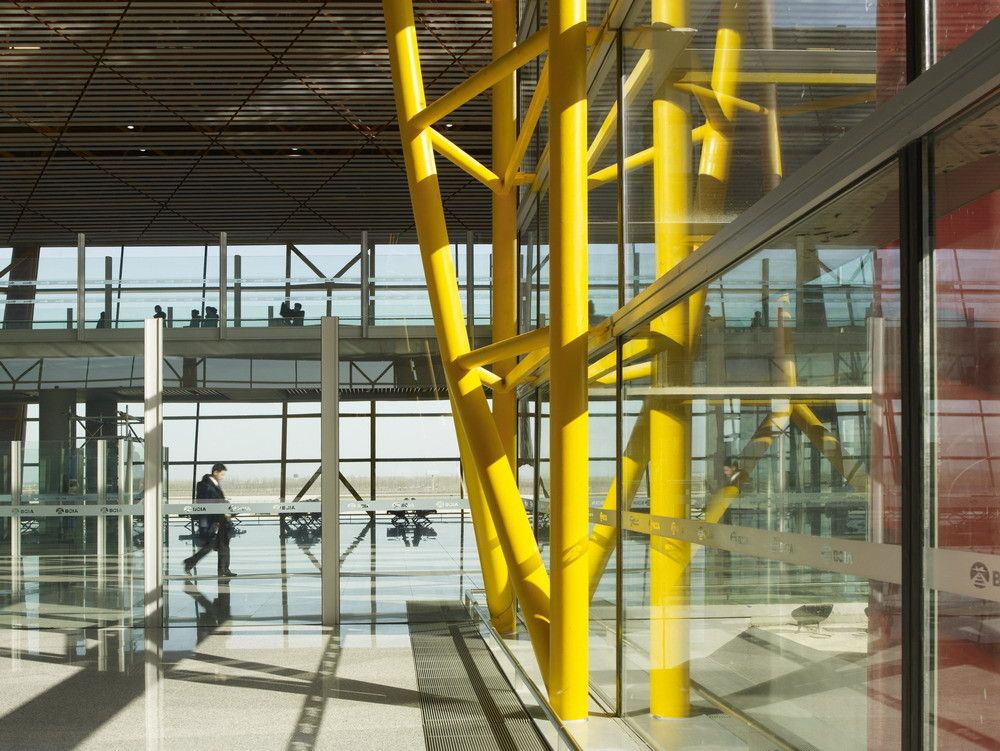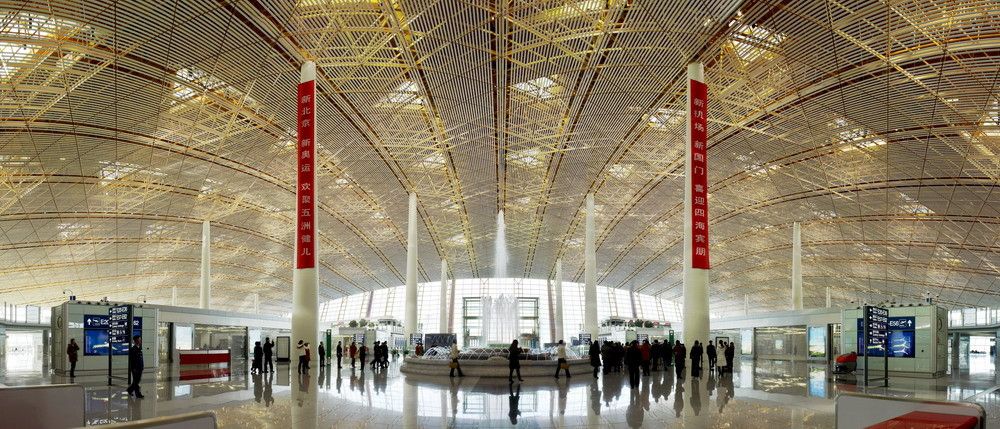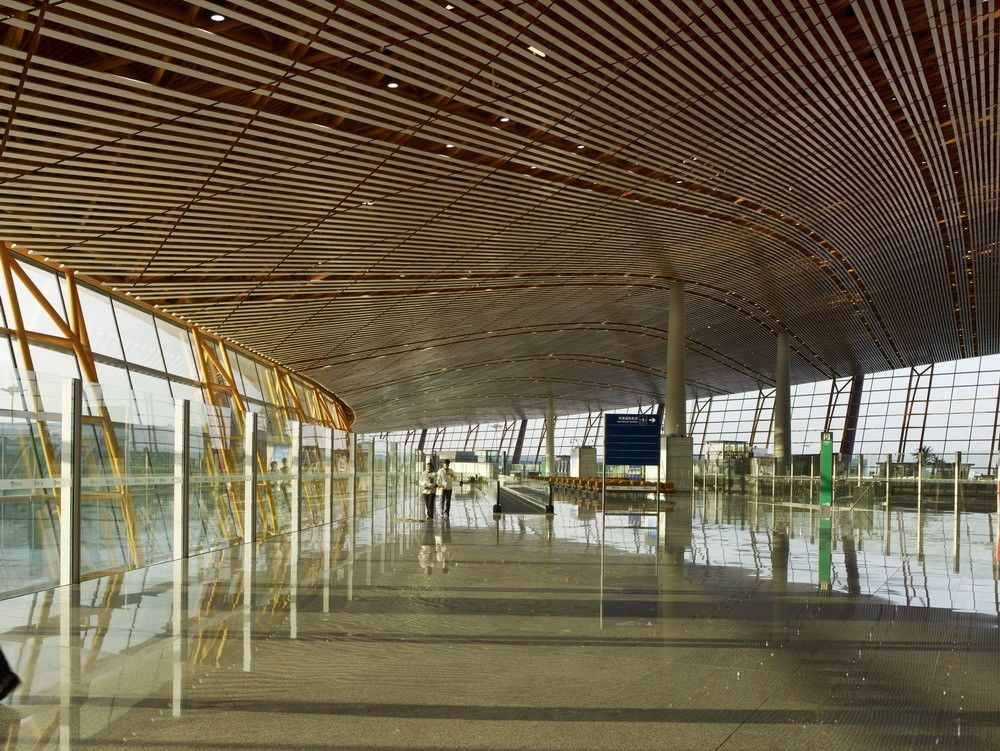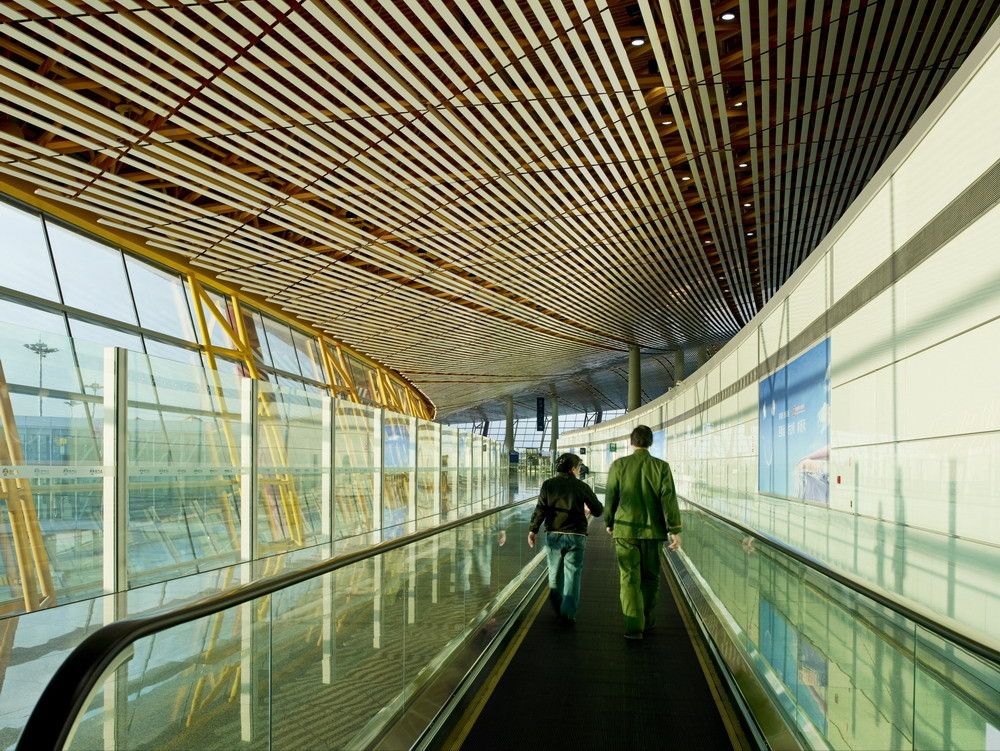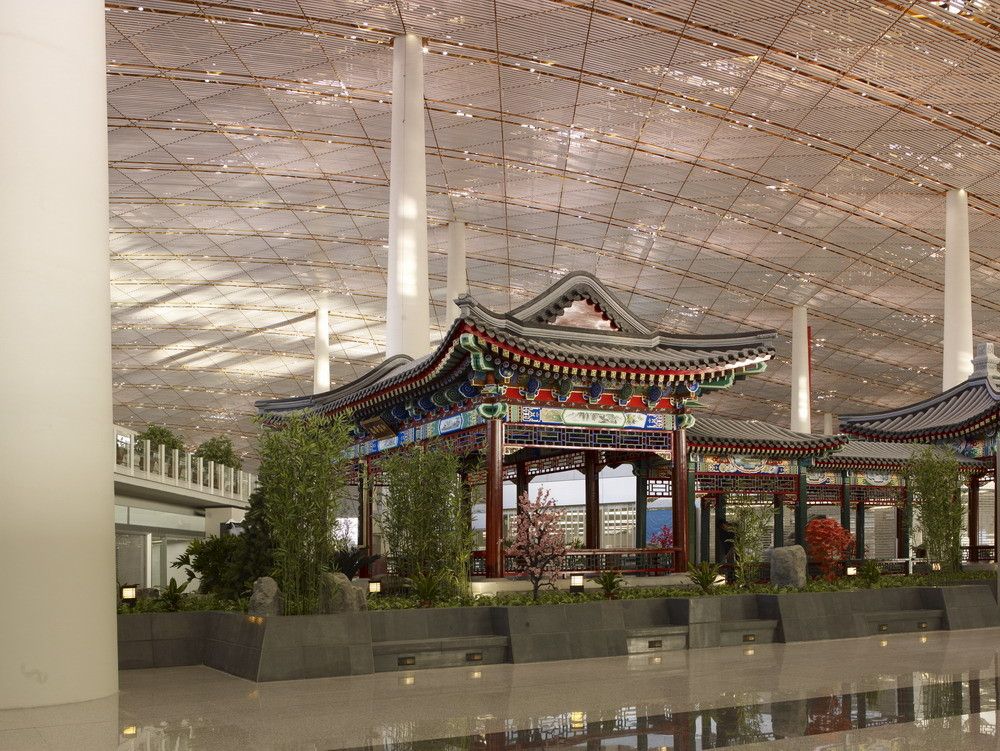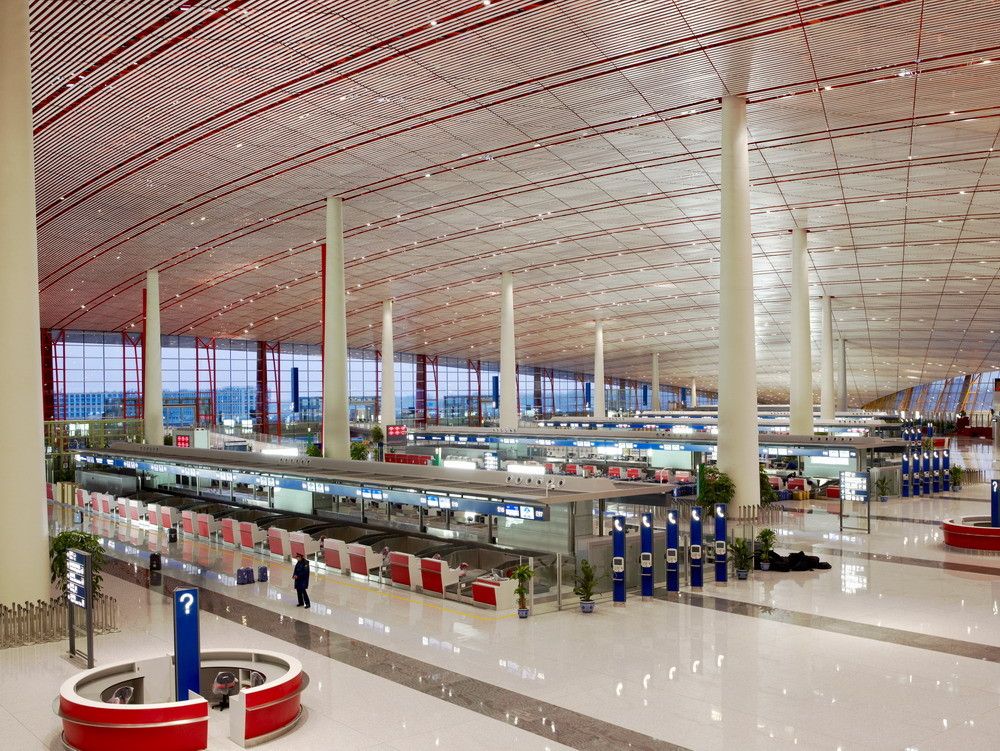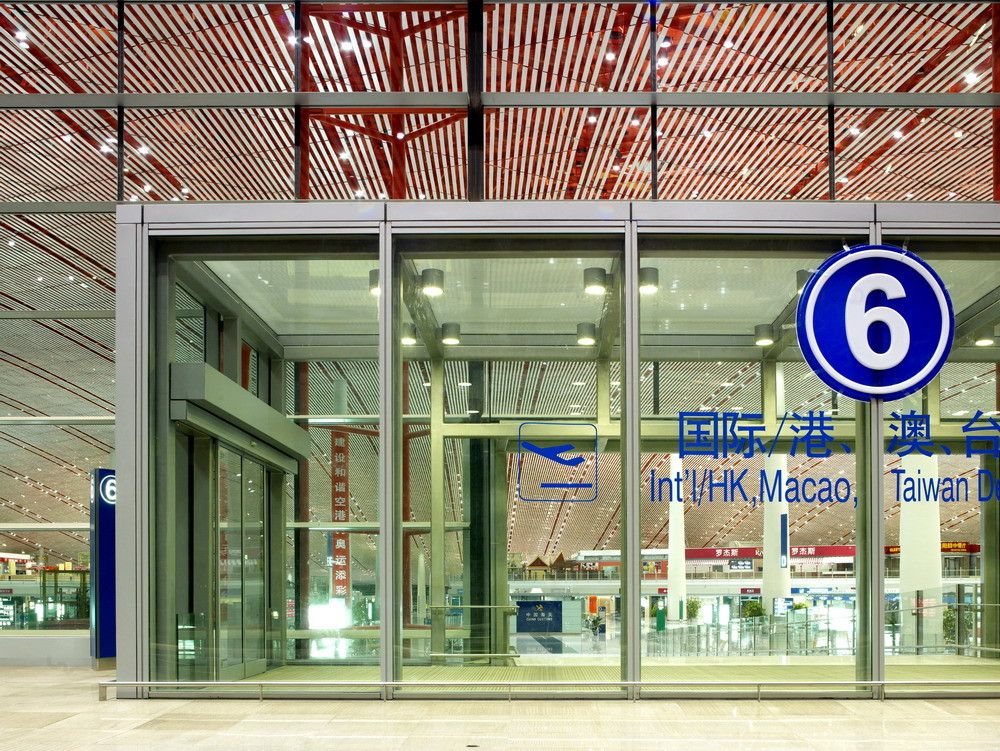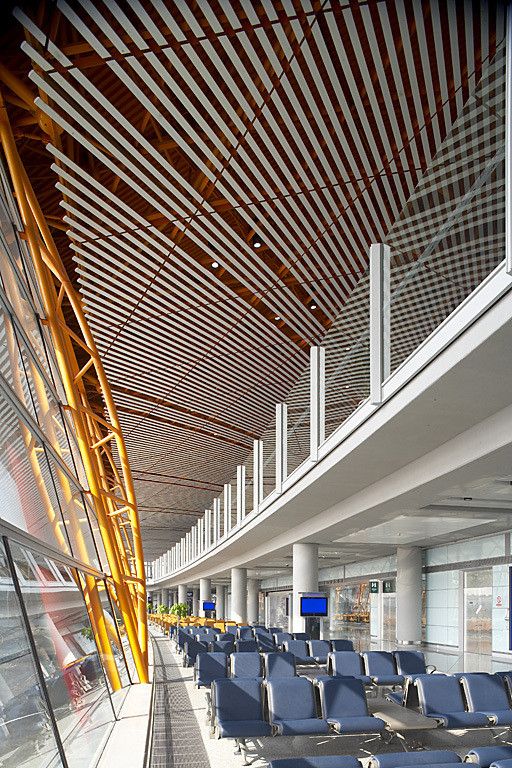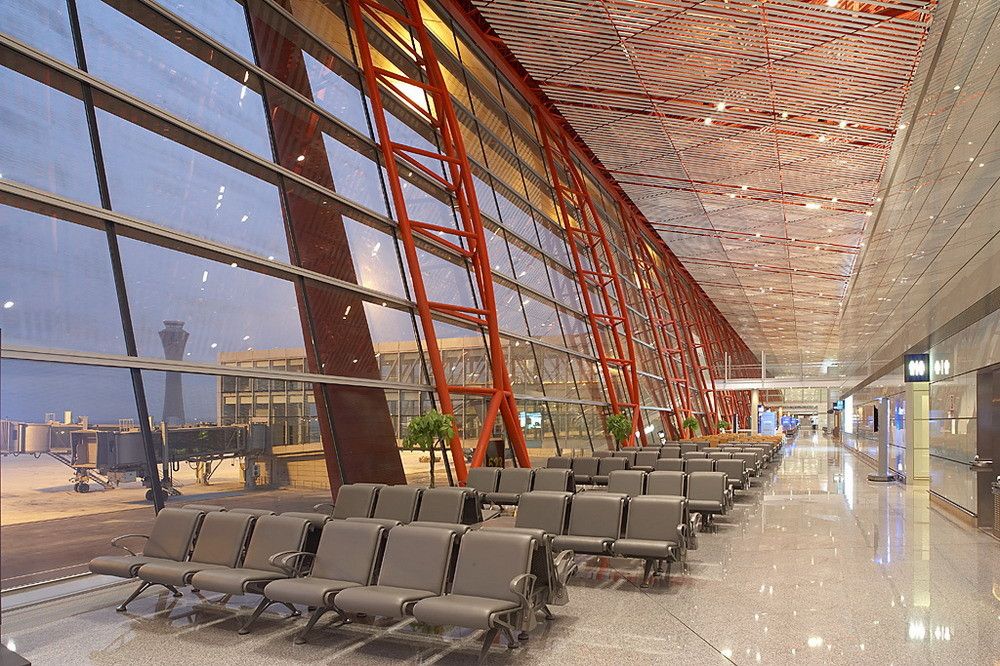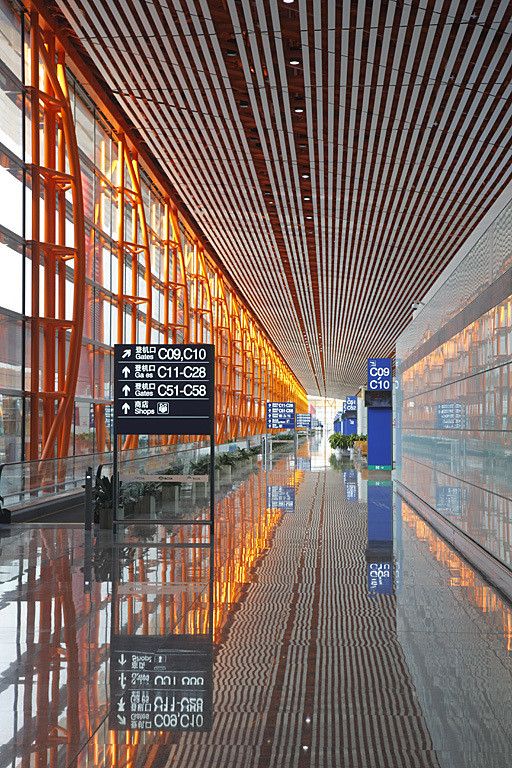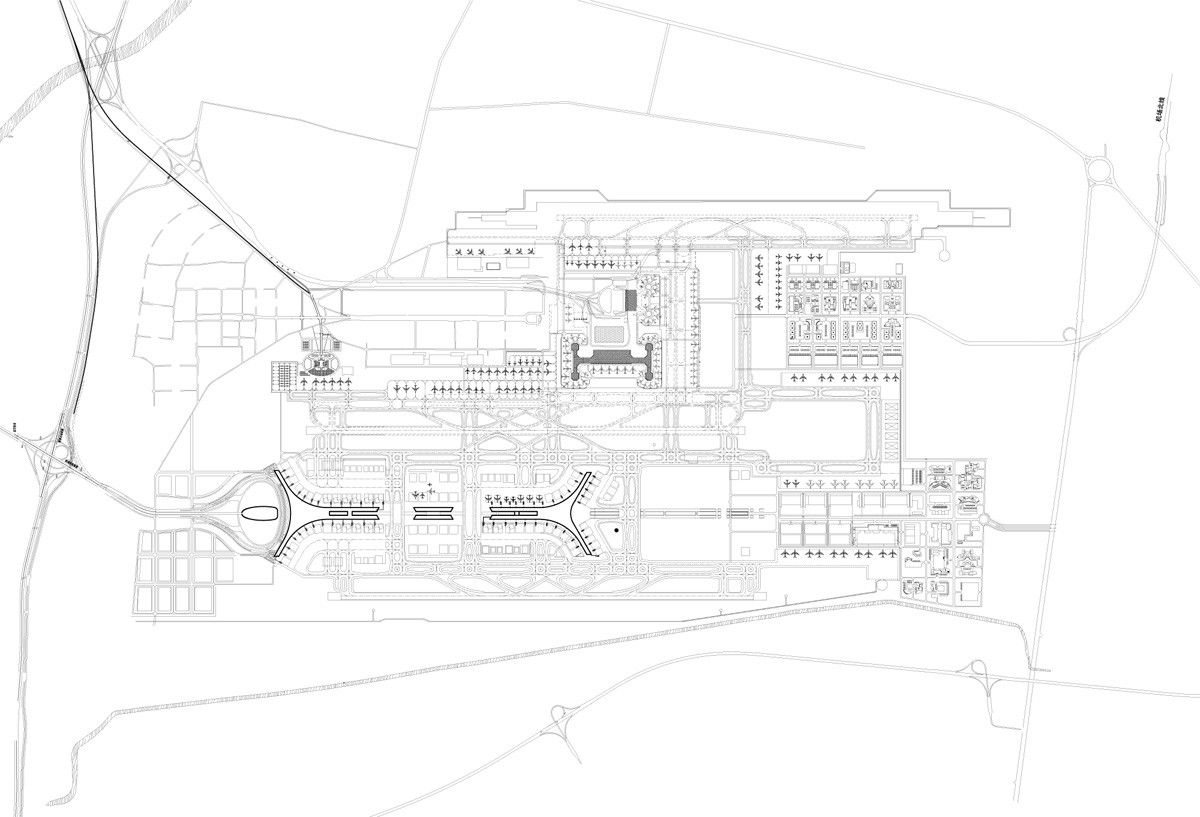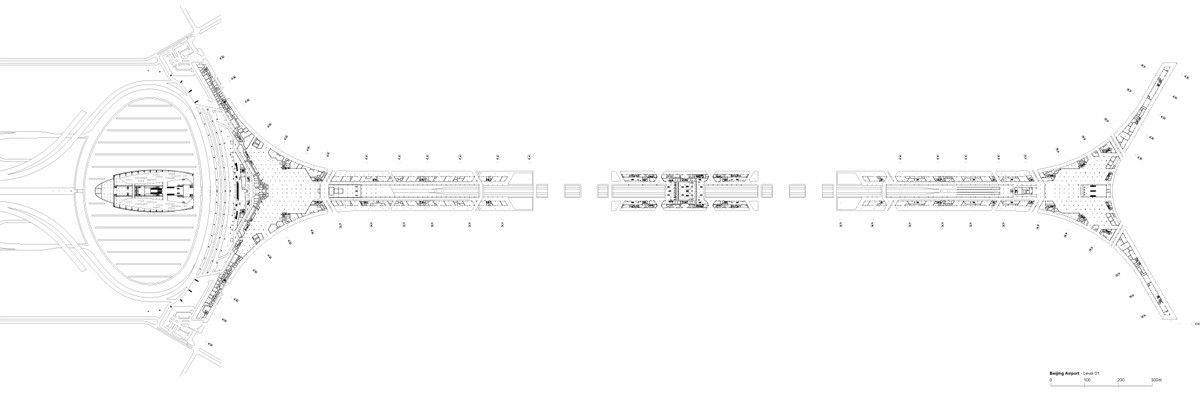Beijing Airport
The Beijing Airport is located between the existing eastern runway and a planned third runway. The terminal building and Ground Transportation Center (GTC), both occupy a floor area of 1.3 million square meters and were designed to accommodate 50 million passengers per annul by 2020.
“The terminal’s design expands on the new airport model created by Stansted and Chek Lap Kok. It is designed for maximum flexibility to cope with the unpredictable nature of the aviation industry, like its predecessors, it aims to resolve the complexities of modern air travel, combining spatial clarity with high service standards. Transport connections are fully integrated, walking distances for passengers are short, with few level changes, and transfer times between flights are minimized. Like Chek Lap Kok, the terminal is open to views to the outside and planned beneath a unifying roof canopy, whose skylights are both an aid to orientation and sources of daylight-the color cast changing from red to yellow as passengers progress through the building”, states the architect.
The Beijing’s international terminal is the world’s largest and most advanced airport building. Its advance is not seen only technologically, but also in terms of passenger experience, operational efficiency and sustainability. Foster+Parters has designed the airport to be welcoming and uplifting and to be a symbol of place. They have evoked traditional Chinese colors and symbols like imperial reds merge into golden yellows and its soaring aerodynamic roof and dragon-like form that celebrate the thrill and poetry of flight. In construction terms, its design optimized the performance of materials selected on the basis of local availability, functionality, application of local skills and low cost procurement.
“The terminal building is one of the world’s most sustainable, incorporating a range of passive environmental design concepts, such as the south-east orientated skylights, which maximize heat gain from the early morning sun, and an integrated environment-control system that minimizes energy consumption. In construction terms, its design optimized the performance of materials selected on the basis of local availability, functionality, application of local skills, and low cost procurement. Remarkably, it was designed and built in just four years“, the description of the architect.
Project Information :
Architect : Foster and Partners
Location : Beijing, China
Project Year : 2008
Roof Area : 360.000 square meters
Total Area : 1.3 million square meters
Client : Beijing Capital International Airport Company Ltd.
Local Collaborating : BIAD (Beijing Institute of Architectural Design)
Structural and Mechanical Engineer : Arup
Landscape Architect : Michel Desvigne
Airport Consultant : NACO
Courtesy of Foster + Partners
Courtesy of Foster + Partners
Courtesy of Foster + Partners
Courtesy of Foster + Partners
Courtesy of Foster + Partners
Courtesy of Foster + Partners
Courtesy of Foster + Partners
Courtesy of Foster + Partners
Courtesy of Foster + Partners
Courtesy of Foster + Partners
Courtesy of Foster + Partners
Courtesy of Foster + Partners
Courtesy of Foster + Partners
Courtesy of Foster + Partners
Courtesy of Foster + Partners
Courtesy of Foster + Partners
Courtesy of Foster + Partners
Courtesy of Foster + Partners
Courtesy of Foster + Partners
Courtesy of Foster + Partners
Courtesy of Foster + Partners
Courtesy of Foster + Partners
Courtesy of Foster + Partners
Courtesy of Foster + Partners
Courtesy of Foster + Partners
Courtesy of Foster + Partners
Courtesy of Foster + Partners
Courtesy of Foster + Partners


